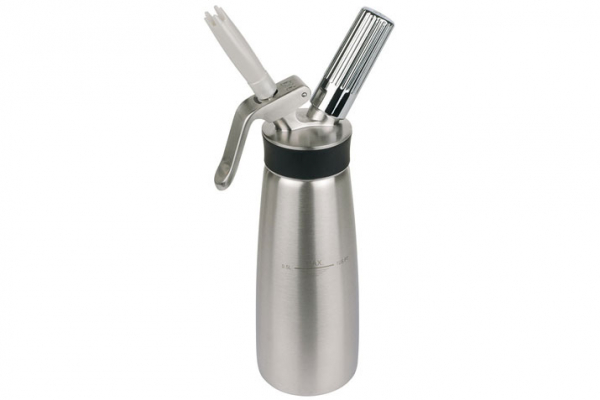Whipping Siphon
In mid-2000, Ferran Adria, the acclaimed Spanish Chef, took a look at a long-used kitchen tool, a whip cream and soda siphon, and opened our eyes to whole new possibilities. It was a big re-discovery for gastronomy and had a lot of chefs and cooks reaching for their old whipper and siphon with new ideas in mind. We will discuss the rebirth of the soda siphon at another time and focus for now on the new versatility Adria found in the humble whipper. The possibilities are endless if you stop focusing its use on cream alone. The device works equally well to create warm foams such as Bearnaise sauce or a perfect potato puree. But, since we all have to walk before we run, I want to acquaint you with a whipper beginning with the old standby – whipped cream.
It is worth mentioning that you can truly hurt (or humiliate) yourself or others if you do not handle a whipper properly. You will be pressurizing a metal can – think about it.
Components of Whipped Cream from a Siphon
- The Cream – Use heavy cream with 30% or higher butterfat content. (Get the skinny on types of cream here.)
- The Stabilizer – The key to a good whipped cream, as to a good relationship, is to make sure it stays whipped. In traditional whipped creams you add confectioner’s sugar which also contains corn starch. For modernist whipped creams there are new-fangled stablizers like xanthan gum, gelatin, or carrageenan, but they are harder to pronounce and shouldn’t be sprinkled on your donut if you have extra.
- The Flavoring – Plain whipped cream is an excellent canvas for added flavor from the usual suspects like vanilla or lemon juice to savory touches like chile.


